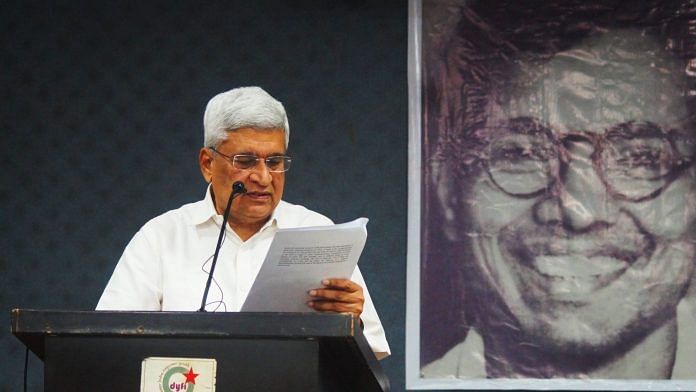New Delhi: India needs a rural workers union, regardless of what work they are engaged in, said senior CPI(M) leader Prakash Karat at the first P Sundarayya Memorial Lecture held in Delhi last week. P Sundarayya was one of the pioneers of the peasant movement in India, a former Rajya Sabha MP, and a founding member of CPI(M).
Speaking on ‘P Sundarayya’s Contribution to the Agrarian Question and its Contemporary Relevance’, Karat said that Sundarayya zeroed in on three main classes in the Indian countryside: landlords, agricultural workers, and a differentiated peasantry.
Karat explained that landlords owned the most and best land, held social and economic dominance, and controlled various income-generating activities in the village. Agricultural workers, on the other hand, primarily worked as hired labourers without owing means of production. The peasantry was categorised into rich, middle, and poor sections based on ownership, labour exploitation, and household surplus.
The lecture was organised by the P Sundarayya Memorial Trust, an independent organisation established in 2014 and managed by the members of the All India Kisan Sabha. The trust aims to promote scientific research on agrarian issues and work towards the welfare of the peasantry and agricultural workers.
Karat highlighted that over time, wealthy capitalist farmers and landlords have formed a class of dominant landowners who extend their economic dominance beyond agriculture by engaging in diverse business activities and controlling resources beyond land.
“Sundarayya’s empirical conclusions cannot be mechanically reproduced today—that is, using Marxism to study the actual level of growth of productive forces and the relations of production involved in agriculture, non-agricultural production and rural economic activity. So, using Sundarayya’s philosophical outlook, and the toolbox he employed to study agrarian relations is what we have to continue to pursue,” Karat said.
He added that the rural working people will have to be at the “forefront of social change in the countryside” to resolve India’s agrarian question in a progressive and democratic manner. “We must form alliances and lead struggles to alleviate the suffering caused by this murky crisis. There is a crisis of low incomes for all except approximately 10% of the rural population,” Karat said.
Karat explained with the proliferation of capitalism, issues that are affecting poor peasantry and agricultural workers are converging, which is why rural unions are required to unanimously fight over these issues.
Sundarayya’s contribution
Sundarayya, who spearheaded the peasant struggle in Telangana in 1940, played an important role in building the communist movement in rural areas. Sandeepan Baksi, director of the Foundation for Agrarian Studies, Bengaluru, told ThePrint that Sundarayya’s most significant contributions lie in recognising the differentiated socio-economic categories or classes within the Indian countryside, rather than perceiving it as a homogeneous community.
“Another major contribution of Sundarayya was to conceive the resolution of the problems of rural and agrarian India as fundamental to achieving democracy and development for the masses, and modernity and equality for society,” he said.
Baksi said Sundarayya based his conclusions on a scientific and evidence-based approach. “He clearly understood that the agrarian situation or structure varies across geographies, and time,” he said.
Sundaryya’s original thesis aimed to develop broad criteria for classifying the Indian countryside, considering factors such as ownership of means of production, the relationship between family labour and hired labour, and household surplus, as explained by VK Ramachandran, a retired professor from the Economic Analysis Unit at the Indian Statistical Institute, Bengaluru.
Baksi acknowledged that although the characteristics and classes identified by Sundarayya have changed in various ways, particularly in the era of neoliberal capitalism, it should not be seen as a limitation of his formulation. “Accounting for contextual specificities and the changes in space and time is an essential aspect of Sundarayya’s analytical framework,” Baksi added.
(Edited by Prashant)



